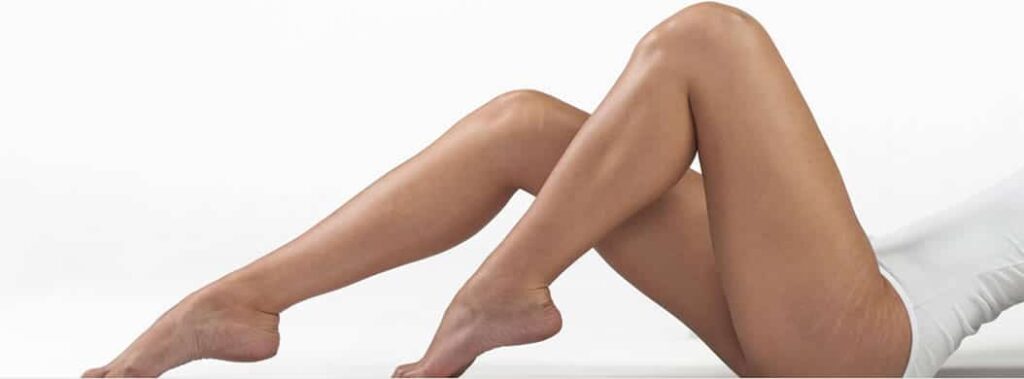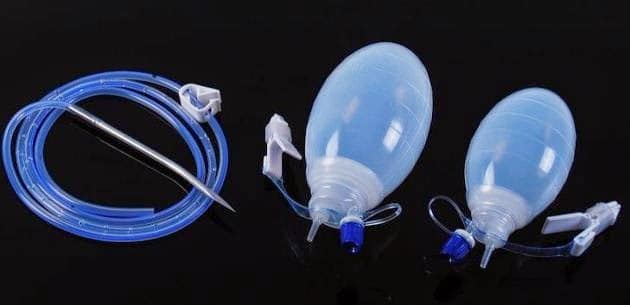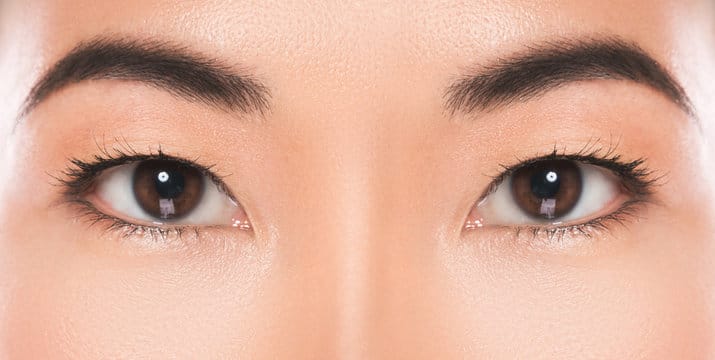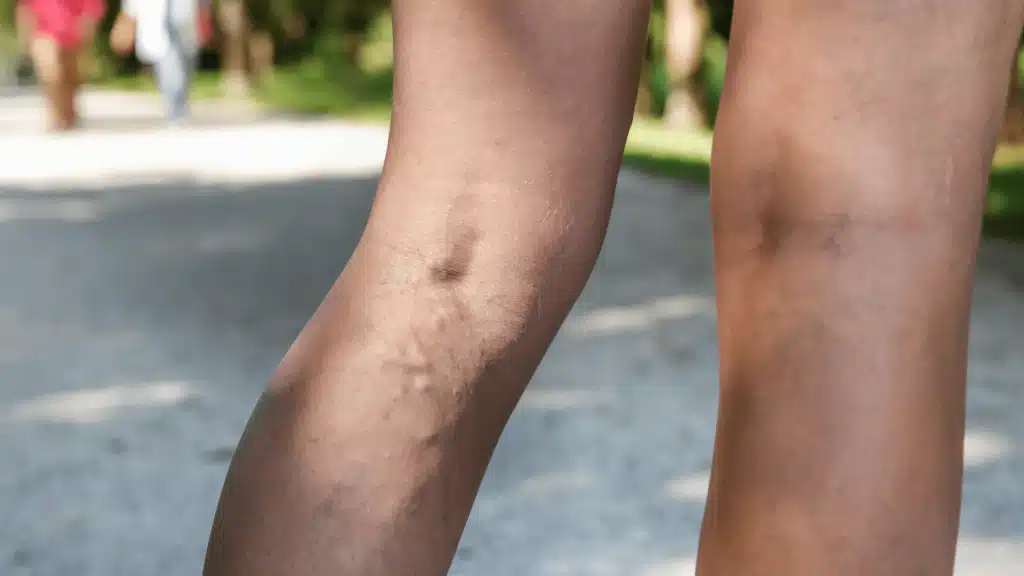Understanding Different Mole Types
Benign vs. Cancerous
Moles vary greatly in appearance. Benign moles, a type of skin lesions often mistaken for normal skin, usually have a uniform color and regular borders without visible scarring, as noted by an accredited skin cancer doctor. They might be flat or raised but generally do not change over time, a characteristic of normal skin and common moles. In most cases, these skin lesions remain consistent.
On the other hand, potentially cancerous moles, a result of abnormal skin lesions differing from normal skin, may exhibit irregular borders, multiple colors, and could change in size or shape, indicating the importance of sunscreen. It’s crucial to monitor these changes in common moles and skin lesions, and consult an accredited skin cancer doctor for any concerns, including mole removal laser options.
Common Types
Congenital Moles
Congenital moles appear at birth. These moles can range in size from small to large and are usually benign. However, their size can influence the risk level; larger congenital moles might have a higher risk of developing into melanoma, as assessed by an accredited skin cancer doctor.
Dermal Moles
Dermal moles are typically raised above the skin surface. They might contain hair and usually have a flesh-colored tone. These types of moles are generally benign and do not pose significant health risks.
Junctional Moles
Junctional moles lie flat against the skin and are usually dark brown or black. They form at the junction where the epidermis meets the dermis layer of the skin. While mostly benign, their dark color necessitates observation for any changes.
Professional Evaluation
It’s vital to get a professional evaluation for any mole that appears suspicious or undergoes rapid changes. Dermatologists can distinguish between different types of moles and recommend appropriate actions, including mole removal laser procedures if necessary.
Comparing Mole Removal Methods
Laser Removal
Laser removal stands out for its minimal scarring and quick recovery. This method uses focused light to break down the mole without damaging surrounding skin. Patients often return to their daily activities immediately after the procedure. However, its effectiveness can vary based on the mole’s depth and color.
Deep or very dark moles might not be fully treated with laser alone.
Surgical Excision
Surgical excision involves cutting out the mole and some surrounding tissue. It’s highly effective for removing deep or cancerous moles. Yet, this method comes with a higher risk of scarring. Recovery time is longer, as stitches are usually required.
Patients should consider this option for larger moles or those suspicious in nature.
Cryotherapy
Cryotherapy uses extreme cold to freeze off the mole. It’s quick and less invasive than surgical methods but may need multiple sessions for complete removal. This approach works best for small, superficial moles.
Skin type and location play crucial roles in its success rate.
Topical Treatments
Topical treatments offer a non-invasive alternative but require consistent application over weeks or months. They gradually lighten the mole but might not remove it entirely. These treatments are suitable for very small, non-cancerous moles.
Effectiveness varies widely among individuals.
Advantages of Laser Mole Removal
Minimal Scarring
Laser mole removal stands out for its minimal scarring. Unlike traditional surgical methods, lasers offer a less invasive approach. They work by targeting the mole with intense light, breaking down the cells within it. This process minimizes damage to surrounding tissues, leading to less noticeable scars.
Patients often prefer this method for its aesthetic outcomes. The healing process is quicker, and the care required post-treatment is minimal. Many report barely visible marks where moles once were, a significant advantage for those concerned about their skin’s appearance.
Precision Targeting
The precision of laser treatment is unmatched. It allows dermatologists to target moles accurately without harming the surrounding skin. This specificity is crucial in maintaining healthy, undamaged skin around the treatment area.
Such accuracy also reduces the risk of infection and complications during the healing process. Patients can trust that only the unwanted mole is affected, leaving their skin intact and reducing overall recovery time.
Convenience
Laser removal shines in its ability to treat multiple moles in a single session. This convenience makes it an attractive option for patients with several moles they wish to remove.
The efficiency of laser treatments means less time spent in medical appointments and more immediate results. For individuals looking to address multiple skin concerns quickly, laser mole removal provides a practical solution.
Identifying Suitable Moles for Laser
Ideal Candidates
Small, flat, and non-cancerous moles stand out as ideal candidates for laser removal. These characteristics ensure the laser can effectively target and eliminate the mole with minimal risk of scarring or complications. The process is quick, often requiring only a few minutes per mole.
It’s crucial to understand that not all moles are suitable for this method. Large or raised moles might not respond well to laser treatment. Similarly, moles that exhibit irregular borders or color variations should be approached with caution. These features can indicate a higher risk of malignancy, making laser removal an unsuitable option.
Consultation Importance
Consulting with a dermatologist is a critical step before proceeding with laser mole removal. They can examine the mole’s characteristics closely to determine if it’s safe for laser treatment. This professional assessment helps avoid unnecessary risks and ensures that any potential health concerns are addressed promptly.
A dermatologist’s expertise is invaluable in distinguishing between benign and potentially malignant moles. They may recommend a biopsy for suspicious-looking moles before considering removal options. This precautionary step is essential to rule out skin cancer and decide the most appropriate treatment method.
Assessing Your Suitability for Laser Removal
Skin Assessment
A thorough skin assessment is crucial before considering laser mole removal. This step involves an accredited skin cancer doctor examining the mole’s size, characteristics, and location. They also check the surrounding normal skin for any signs that might complicate the procedure.
Professionals assess if your skin lesions are suitable for laser treatment. They look at factors like mole depth and how it contrasts with your normal skin tone. This evaluation ensures the laser targets only the mole without damaging surrounding tissue.
Health History
Your personal health history plays a significant role in determining your suitability for laser removal. Conditions like a history of keloid scarring can affect the decision.
Doctors also consider your recent sun exposure. Excessive sun can make your skin more sensitive to laser treatments. It’s important to disclose any medications you’re taking that might increase this sensitivity.
Realistic Expectations
Setting realistic expectations is essential when considering laser mole removal. While lasers offer a non-invasive solution, they may not completely remove larger or deeper moles on the first attempt.
Patients should understand that multiple sessions might be necessary. The outcome also depends on how well your skin heals post-treatment.

Safety Measures and Procedure Oversight
Practitioner Qualifications
Professionals performing laser mole removal must have specific qualifications and experience. They often hold degrees in dermatology or cosmetic surgery and undergo specialized training in laser procedures. Their expertise ensures the safe use of lasers on various skin types.
It’s crucial for patients to seek practitioners with a solid track record. Referrals and reviews can guide one to a reputable professional.
Safety Protocols
During the procedure, safety is paramount. Clinics employ advanced laser technology designed to minimize risk. Protective eyewear is mandatory for both patient and practitioner to shield eyes from harmful laser rays.
The treatment area is sterilized before starting. This prevents infection, a key concern in any surgical procedure. Proper equipment handling and maintenance also play a critical role in ensuring patient safety.
Pre and Post-Treatment Care
Adhering to pre and post-treatment guidelines significantly reduces complications. Patients should avoid sun exposure and certain medications as advised by their doctor. Following the procedure, attention to the treated area is essential to prevent infection.
Doctors provide detailed care instructions tailored to each individual’s needs. These guidelines help achieve optimal healing and results, making them an integral part of the treatment process.
Post-Removal Skincare and Scar Management
Sun Protection
After laser mole removal, protecting the treated area from the sun is crucial. Apply a broad-spectrum sunscreen with at least SPF 30 daily. This prevents hyperpigmentation and ensures optimal healing.
Sunscreen not only shields the skin but also minimizes visible scarring. Reapply every two hours when outdoors to maintain protection.
Gentle Cleansing
Keep the area clean with gentle cleansing. Use mild, fragrance-free soap and lukewarm water. Pat dry carefully; do not rub.
Gentle cleansing aids in preventing infection and supports the healing process. Avoid using harsh chemicals or exfoliants on the treated site.
Scar Minimization
Options for minimizing scars include silicone sheets and scar creams. These treatments can make scars less noticeable.
Silicone sheets help flatten and fade scars over time. Apply according to package instructions for best results. Scar creams, enriched with ingredients like vitamin E, can also improve the appearance of scarring.
Further Treatments
For persistent or prominent scars, consider further laser treatments. Consult your dermatologist about this option.
Additional laser sessions can reduce scar visibility significantly. They promote smoother skin texture and even out skin tone around the treated area.
Making the Decision for Laser Removal
Pros and Cons
Before opting for laser mole removal, it’s crucial to weigh the pros and cons. Laser removal is less invasive than cutting or shaving methods, often resulting in minimal scarring. This technique uses concentrated light beams to break down mole cells without significant damage to surrounding skin. However, it may not be effective for moles that are deep or have a dark color, as the laser might not fully penetrate them.
Laser removal is generally quicker, with most procedures completed in an office visit. Yet, some individuals might experience pain or require multiple sessions for complete removal, affecting overall cost and time commitment.
Professional Opinions
Seeking multiple professional opinions is advisable to ensure laser removal is the best option for your specific situation. Dermatologists can assess mole characteristics, like depth and color, alongside medical reasons such as potential sun damage history. They can also discuss cosmetic reasons driving your decision.
Professionals provide insights into expected results versus other methods like freezing or cutting. Their expertise helps tailor the approach to your needs, maximizing safety and effectiveness.
Qualified Practitioners
Choosing a qualified and experienced practitioner cannot be overstated for achieving optimal results and ensuring safety. Research their credentials, ask about their experience with laser removal specifically, and request before-and-after photos of previous patients.
Qualified practitioners can significantly reduce risks associated with laser treatments and guide you through post-removal care to prevent complications or unsatisfactory outcomes.
Closing Thoughts
Choosing laser mole removal is a significant step towards achieving clearer skin and boosting your confidence. You’ve explored various mole types, compared removal methods, and understood the advantages of laser technology. Identifying suitable moles and assessing your candidacy are crucial for a successful outcome. Safety measures, procedure oversight, and post-removal care are key to ensuring optimal healing and minimal scarring. Making the decision for laser removal comes down to informed choices and personal needs.
Remember, the journey to clearer skin doesn’t end with mole removal. It’s about maintaining healthy skin practices and following expert advice for lasting results. If you’re considering laser mole removal, take the next step by consulting with a dermatology specialist today. Your skin deserves the best care, and you hold the power to make that choice. Act now for a brighter, more confident tomorrow.
Frequently Asked Questions
What types of moles are suitable for laser removal?
Laser mole removal works best on small, non-cancerous moles that are flat and dark in color. It’s essential to consult with a dermatologist to determine if your mole fits these criteria.
How does laser mole removal compare to other methods?
Laser removal is less invasive, has a shorter recovery time, and typically results in minimal scarring compared to surgical methods. It’s effective for certain types of moles and offers a cosmetic advantage.
What are the advantages of choosing laser mole removal?
Laser mole removal offers precision, reduced risk of scarring, and a quicker healing process. It’s an excellent option for cosmetic concerns and for moles located in visible areas.
How can I assess my suitability for laser mole removal?
Suitability depends on the mole’s type, size, and location, as well as your skin type. A consultation with a dermatologist is necessary to evaluate these factors and determine if laser removal is the right choice for you.
What safety measures are taken during the laser removal procedure?
Safety measures include using FDA-approved laser technology, conducting the procedure under professional supervision, and following strict sterilization protocols. These ensure the treatment is both safe and effective.
What should I expect in terms of post-removal skincare and scar management?
Post-removal care involves keeping the area clean, applying prescribed ointments to aid healing, and avoiding direct sunlight. Proper care can significantly minimize scarring and promote faster recovery.
How do I make the decision for laser mole removal?
Making this decision involves understanding your goals, researching the procedure’s benefits and limitations, and consulting with a qualified dermatologist who can provide personalized advice based on your specific needs.











